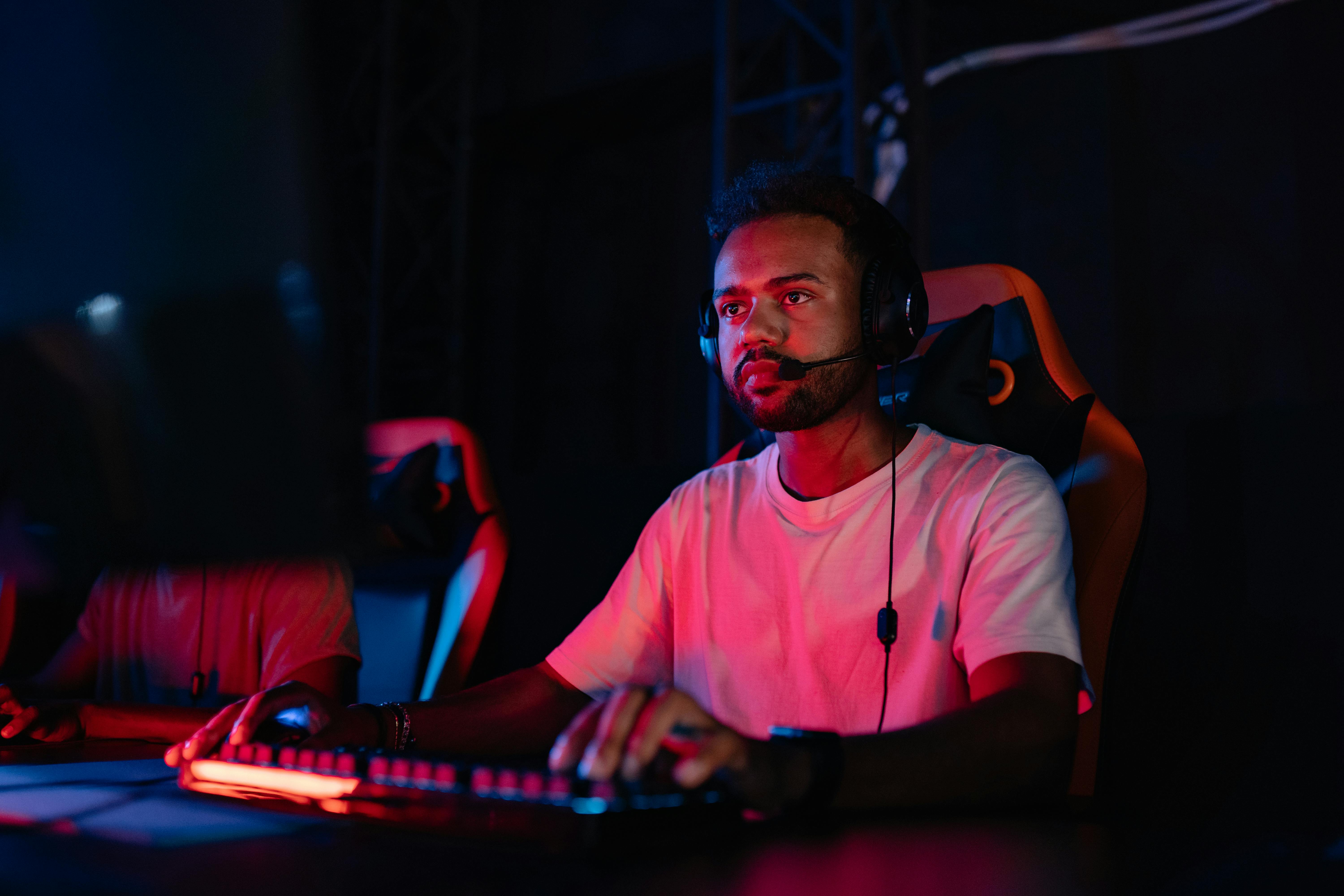How to Play Rocket League on PC: A Comprehensive Guide

rocket League, the acclaimed vehicular soccer game, offers a unique blend of arcade-style action and strategic depth. Since its transition to a free-to-play model in 2020, it has attracted millions of players worldwide. This guide provides a comprehensive walkthrough for PC players, covering everything from system requirements and installation to gameplay tips and customization.
Getting Started: Installation and system Requirements
Before diving into the exhilarating world of Rocket league, ensure your PC meets the game’s specifications. Rocket League is known for its accessibility, running on a wide range of hardware.
System Requirements
Here are the minimum and recommended system requirements for Rocket League on PC:
- Minimum System Requirements:
- Operating System: Windows 7 (64-bit) or newer.
- Processor: 2.5 GHz Dual Core.
- Memory: 4GB RAM.
- Storage: 20 GB available space.
- DirectX: Version 11.
- Graphics Card: NVIDIA GeForce 760, AMD Radeon R7 270X, or better.
- Recommended System Requirements:
- Operating System: Windows 7 (64-bit) or newer.
- Processor: 3.0+ GHz Quad Core.
- Memory: 8GB RAM.
- Storage: 20 GB available space.
- DirectX: Version 11.
- Graphics Card: NVIDIA GeForce GTX 1060, AMD Radeon RX 470, or better.
- VRAM: 4GB.
Downloading and Installing Rocket League
Rocket League is available for download through the Epic Games Store. Here’s how to get it:
- Download the Epic Games Launcher: Visit the official Epic Games website and download the launcher.
- Create an Epic Games Account: If you don’t have one, create a free account.
- Install the Epic Games Launcher: Run the downloaded installer and follow the on-screen instructions.
- Log In: Open the Epic Games Launcher and log in with your account credentials.
- Search for Rocket League: Use the search bar within the store to find “Rocket League.”
- Get the Game: Click on the “Get” button, then “Place Order” to add it to your library.
- Install: Navigate to your library, select Rocket League, and click “Install.” Choose your desired installation directory and proceed.
Note for Steam Users: While Rocket League is no longer available for new downloads on Steam, players who purchased it before its transition to the Epic Games Store can still access and play it through their Steam library.
Mastering the Controls
Effective control is paramount in Rocket League. Whether you prefer a keyboard and mouse or a controller, understanding and customizing your bindings can significantly improve your gameplay.
Keyboard and Mouse Controls
The default keyboard controls are as follows:
- Accelerate: X
- Reverse: S
- Steer: A, D
- Jump: Mouse Right Button
- Boost: Mouse Left Button
- Powerslide: Left Shift
- Air Steer and Pitch: W, A, S, D
- Air Roll: Left Shift
- Focus on Ball: Space
- Rear View: Mouse Wheel
- Scoreboard: Tab
- Voice Chat: F
- Skip Music Track: N
- Text Chat: T
- Team Text Chat: Y
- Reset Shot: Back Space
- Save Replay: Back Space (Hold)
- Use Item: R
- Capture Screenshot: F12
Many players find it beneficial to rebind keys for optimal performance. For instance, some players bind jump and boost to different mouse buttons or keys for easier simultaneous use.
Controller Settings
While keyboard and mouse are viable, a controller is widely recommended for Rocket League due to the nuanced analog control it offers.
Recommended Controller Bindings (Pro Player Example):
- Jump: Cross (PlayStation) / A (Xbox)
- Boost: R1 (PlayStation) / RB (Xbox)
- Powerslide: L1 (PlayStation) / LB (Xbox)
- Air Roll: L1 (PlayStation) / LB (Xbox)
- Air Roll Right: Circle (PlayStation) / B (Xbox)
- Air Roll Left: Square (PlayStation) / X (Xbox)
Sensitivity and Deadzone:
- Aerial Sensitivity & Steering Sensitivity: Most pro players set these between 1.20 and 2.00. Some, like Evan ‘M0nkey M00n’ Rogez, use higher sensitivities (e.g., 3.90). Experiment to find what suits you.
- Controller Deadzone: Typically between 0.03 and 0.10 for quicker movement.
- Dodge Deadzone: Recommended to be between 0.4 and 0.7. Adjust this if you accidentally backflip when trying to aerial.
It’s crucial to find a controller setup that allows you to press essential actions like jump, boost, and ball cam simultaneously without straining your thumb.
Optimizing Performance: Graphics and Settings
To ensure a smooth and responsive experience, optimizing your in-game settings is crucial. This can significantly impact your frames per second (FPS) and reduce input lag.
In-Game Video Settings
- Resolution: Set to your monitor’s native resolution (e.g., 1920×1080) for the clearest image. If experiencing lag, consider lowering it to 900p or 720p.
- Display Mode: Fullscreen is generally recommended for minimal input lag and optimal performance.
- Vertical Sync (VSync): Disable VSync to reduce input lag, unless you experience significant screen tearing.
- FPS Limit: Set this to match your monitor’s refresh rate or slightly above for smooth gameplay.
- Texture Detail, World Detail, Particle Detail: Set these to “High Performance” or “Performance” for a significant FPS boost.
- Effect Intensity: Set to “Low.”
- Shadow Quality, Anti-Aliasing, Render Quality: Lowering these settings can provide a substantial FPS increase.
- Ambient Occlusion, Depth of Field: Turn these off.
- Render Quality: High Quality is generally recommended, but can be lowered if needed.
Nvidia Control Panel Settings (for Nvidia GPUs)
- Power Management Mode: Set to “Prefer maximum performance.”
- Texture Filtering – Quality: Set to “High performance.”
Windows Optimizations
- Game Mode: Ensure Windows Game Mode is turned ON.
- Power Plan: Set your power plan to “High Performance” or “Ultimate Performance.”
- Background Apps: Close any unnecessary background applications that consume CPU or GPU resources.
- Startup Apps: Audit and disable unnecessary startup applications.
- Disable Fullscreen Optimizations: Right-click the Rocket League executable file, go to Properties > Compatibility, and check “Disable fullscreen optimizations.”
- Keep Drivers Updated: Regularly update your Windows and graphics drivers.
- Clean Your PC: Dust buildup can cause overheating and performance issues.
Using tools like “Low Specs Experience” can also help automate many of these optimizations.
Gameplay Modes and Features
Rocket League offers a variety of game modes to suit different playstyles.
Core Game Modes
- Soccar: The standard 3v3 car soccer mode.
- Hoops: A basketball-style mode played with a larger ball.
- Snow Day: Played on ice with a hockey puck.
- Dropshot: A mode where teams must break through the opposing team’s floor to score.
Online Free Play
Introduced in Season 17, Online Free Play allows players to practice skills with others in a dedicated session. You can create or join sessions from the main menu, post-match screen, or while searching for a game.
Matchmaking and Cross-Platform Play
Rocket League features robust cross-platform play, allowing players on PC, PlayStation, Xbox, and Nintendo Switch to compete together.
- Cross-Platform Play: This is enabled by default and can be managed in the Gameplay settings.
- Cross-Platform Parties: You can party up with friends on different platforms via the Epic Friends list in the Social tab.
- Matchmaking: The game uses skill-based matchmaking to ensure fair matches. However, some players report occasional matchmaking issues where lower-ranked players are matched with higher-ranked ones.
Customization and Community
Rocket League offers extensive customization options for your car, allowing you to personalize your vehicle’s appearance.
Car Customization
You can customize your car with various decals, paint finishes, wheels, rocket boosts, toppers, antennas, and goal explosions. Many of these can be obtained through gameplay, trading, or the in-game Item Shop.
Free Item Codes
Psyonix occasionally releases free item codes, often tied to special events or promotions. These can be redeemed in the “Extras” tab under “Settings.”
Rocket League Championship Series (RLCS)
The RLCS is the premier professional esports league for Rocket League. The 2025 season features an increased prize pool of $5,000,000 across 3v3 and 1v1 formats. The season includes online open tournaments and in-person Major tournaments, culminating in the World Championship. The first Major of 2025 is scheduled for March 27-30 in Birmingham, UK.
Tips for Improvement
- Practice Regularly: Consistent practice is key to mastering Rocket League’s mechanics. Utilize Free Play and custom training packs.
- Watch Pros: Study professional players’ settings and gameplay to learn advanced techniques and strategies.
- Understand Hitboxes: Different car bodies have different hitboxes, which can affect how the ball interacts with your car.
- Optimize Camera Settings: Finding the right camera settings is crucial for situational awareness.
- Focus on Fundamentals: Master basic mechanics like aerial control, powersliding, and boost management before attempting complex maneuvers.
- Join the Community: Engage with the Rocket League community through forums and Discord servers for tips, advice, and to find teammates.
Rocket League continues to evolve, with ongoing updates and seasons ensuring a dynamic and engaging experience for players on PC. By following this guide, you’ll be well-equipped to jump into the arena and start your journey to becoming a champion.







